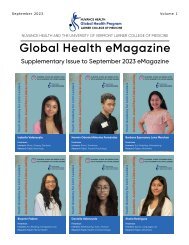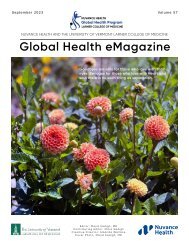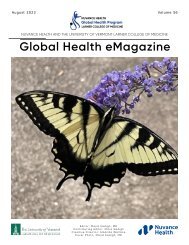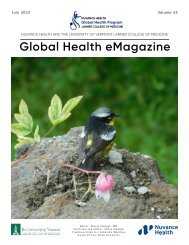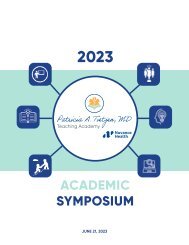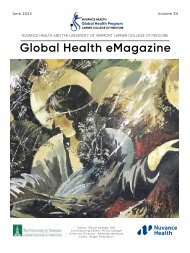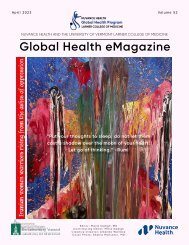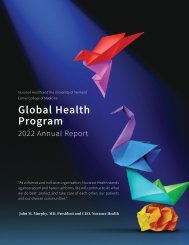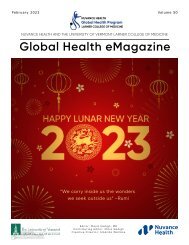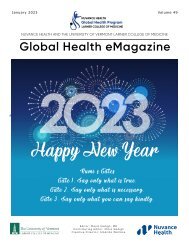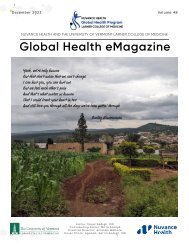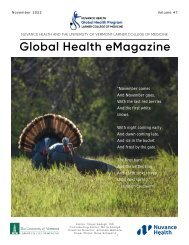eMagazine March 2023
Create successful ePaper yourself
Turn your PDF publications into a flip-book with our unique Google optimized e-Paper software.
OUR PEOPLE,<br />
OUR MISSION<br />
Global Health<br />
<strong>eMagazine</strong><br />
<strong>March</strong> <strong>2023</strong><br />
Highlights<br />
Reviews<br />
GH Narrative<br />
Reflections<br />
Hispanic and Latinx Voices<br />
Global Local<br />
Voices of Ugandan<br />
Students<br />
Nursing Division<br />
Women’s Health Education<br />
Innovation and Technology<br />
Our Beautiful Planet<br />
Art to Remind Us of Who We<br />
Can Be<br />
two Medicare programs set to expire in October which provided $600 million in<br />
additional funding for rural hospitals (H.R.5305, 2021). Another notable past federal<br />
intervention took place in 1997 when the Centers for Medicare and Medicaid<br />
Services (CMS) established the “critical access” designation for hospitals across<br />
the nation. Those that qualified received 101% reimbursement for eligible patients<br />
(CMS, 2022). On top of bills and agencies, the National Health Service Corps<br />
(NHSC) is a federal program which seeks to provide incentives for newly certified<br />
providers to work in rural communities and address the staffing shortage. This<br />
wide variety of federal initiatives have sought to address the problem, but not<br />
many have made major inroads.<br />
At the state level, officials have proposed solutions for this problem and have<br />
a different structure than many federal policies. For instance, the Pennsylvania<br />
Rural Health Model was launched in January 2017 and uses a different approach<br />
for CMS payments. It requires payers to provide eligible hospitals with a fixed<br />
amount to cover all hospital care and services while the hospitals, in turn, work on<br />
improving quality and efficiency of care. This model also sets a series of metrics to<br />
track performance and ensure that participating hospitals meet the necessary<br />
standards and continue on a growth trajectory (CMS, 2017). There have been<br />
other proposed reforms, one being a Hub and Spoke Model in Georgia but was<br />
not as effective as that of Pennsylvania. Future ideas must include components<br />
at the federal and state level to generate true impactful reform.<br />
The issue of rural hospital closures is one of intricacy with multiple facets. There<br />
are several causes that have contributed to this situation, with the pandemic<br />
only exacerbating the challenges. Many of the struggles can be narrowed to the<br />
way payments are structured with the high number of Medicare and Medicaid<br />
patients served. While still important to push for increased staffing through the<br />
NHSC or improve health awareness campaigns in rural communities, meaningful<br />
reform will only come about through revamping federal payment design. This will<br />
lead to consistent revenue for rural hospitals and reduce the number of closures<br />
each year. No matter the path, significant reform must be pursued to improve<br />
access to healthcare for all Americans.<br />
Article of the Month<br />
You’re Invited<br />
Photo News<br />
Calendar<br />
Global Health Family<br />
Resources<br />
Previous Issues of<br />
the <strong>eMagazine</strong><br />
Click here to visit<br />
the Nuvance Health<br />
Global Health Program<br />
COVID-19<br />
Resource Center<br />
24




